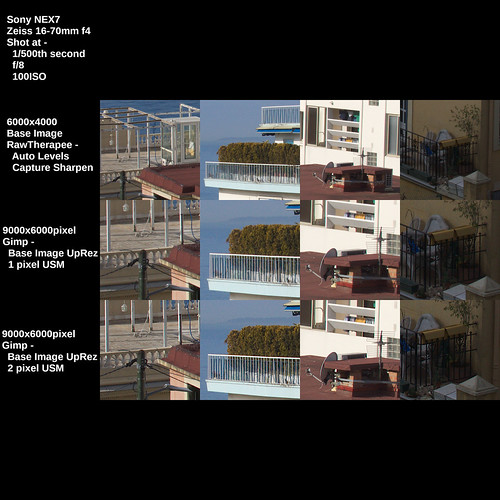I couldn't help but notice that folks are talking about Photoshops "new" function that up-rez's an image. Some people think it's the cat's meow. Others point out that Topaz AI somethingorother is better. And there have been comparisons showing how "good" an up-rez can be these days.
If you know me, you'll likely smile or laugh or possibly cringe when I say I feel there was nothing new under the sun and that new Photoshop and Topaz products are, perhaps, little more than re-packagings of previously existing functions.
NOTE: Increasing file sizes does not add information using the aforementioned tools or using the steps described here. If data isn't in the original file to begin with, it will not be added by increasing the dimensions of the image. This is potentially important as some software providers imply that Artificial Intelligence (AI) is being used to improve an image in ways that were not previously possible. This is a demonstrably false implication. Don't fall for it.
What Adobe and Topaz are doing is simply this.
- Cubic up-rez - with an appropriately high interpolation filter sample rate
- Unsharp Mask - other image sharpening methods - set to various "sharpening" levels
Knowing these things, we can do the very same using the free Open Source Software the Gimp to demonstrate exactly what the pay to play companies are selling.
I've chosen the Gimp specifically because the software designers have correctly implemented the Cubic interpolation function. We will select the X/Y resolution of the interpolation filter and it will be properly applied to the image.
This is very important as I've found that some software packages don't correctly apply the image resolution settings when they perform an up-rez and images can come out "blocky" and "pixilated" as you increase the image dimensions.
Here is what I suggest. Using the Gimp, select...
- Image -> Scale Image
- Quality -> Interpolation -> Cubic
- X/Y resolution -> 1200 - this right here is the secret to success
NOTE: If you use X/Y resolution of the default 300dpi, the sample rate is too low and your image will be "blocky" and "pixilated" after you increase the image dimensions. You can try setting X/Y resolution to 600dpi if you like. It will certainly work for 2x linear file size increases. I prefer the 1200dpi setting as the interpolation "slices" the filter takes will be 2x finer than 600dpi and 4x finer than 300dpi. If you don't understand why this would be the case, ask me and I will try and point you to a layman's description of interpolation filters.
Here is the base scene that I will work from.

In the following comparison I show the base image as processed in RawTherapee and with "Capture Sharpen" applied. Then I show the Gimp output of a simple Image -> Scale image from 6000 pixels on the long side to 9000 pixels (a 2x area increase in size) with light USM (unsharp mask) applied in selecting 1 pixel and 2 pixel mask widths.

As you can see, if you start with a "clean file" (ie: well controlled noise) the USM sharpened output looks pretty good. This is as good, in fact, as anything I've seen from the new Super Resolution products, because, as I said earlier, those products aren't really bringing anything new to the table.
A last note before we move on. I've found that the Sony APS-C sensors (even the 10+ year old sensors) out perform Canon's current Full Frame sensors at low ISO. Canon CR2 raw images have a lot more noise in the shadow areas than Sony AWR raw files.
Further, after working with Canon and Sony raw images for well over a decade, I have the strongest impression that a Sony NEX7 low ISO file up-rez'd from 6000 pixels to 9000 pixels on the long side are cleaner and clearer than a native resolution Canon CR2 file of any file dimension, even with a decent "Capture Sharpen" applied.
Heresy, perhaps? In my case it seems to be the truth.
No comments:
Post a Comment